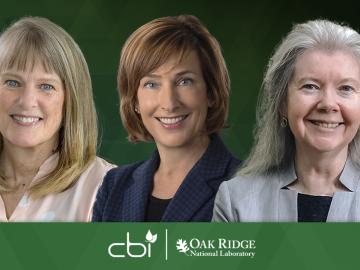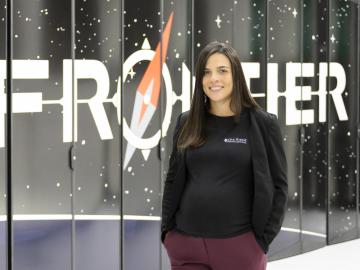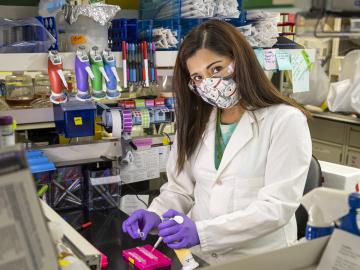
Filter News
Area of Research
News Topics
- (-) Advanced Reactors (4)
- (-) Biology (18)
- (-) Computer Science (30)
- (-) Exascale Computing (13)
- (-) Frontier (13)
- (-) Machine Learning (12)
- (-) Microscopy (6)
- (-) Polymers (3)
- 3-D Printing/Advanced Manufacturing (17)
- Artificial Intelligence (19)
- Big Data (12)
- Bioenergy (16)
- Biomedical (14)
- Biotechnology (2)
- Buildings (6)
- Chemical Sciences (12)
- Clean Water (7)
- Composites (2)
- Coronavirus (14)
- Critical Materials (1)
- Cybersecurity (8)
- Emergency (1)
- Energy Storage (14)
- Environment (36)
- Fossil Energy (2)
- Fusion (16)
- Grid (13)
- High-Performance Computing (19)
- Hydropower (2)
- Isotopes (10)
- Materials (21)
- Materials Science (18)
- Mathematics (4)
- Mercury (2)
- Microelectronics (2)
- Nanotechnology (7)
- National Security (15)
- Neutron Science (33)
- Nuclear Energy (31)
- Partnerships (6)
- Physics (18)
- Quantum Computing (6)
- Quantum Science (9)
- Security (3)
- Simulation (19)
- Software (1)
- Space Exploration (5)
- Summit (14)
- Transportation (9)
Media Contacts

The Department of Energy’s Center for Bioenergy Innovation, led by Oak Ridge National Laboratory, recently added three new members to its board of directors: Deborah Crawford of the University of Tennessee, Knoxville; Susan Hubbard of ORNL; and Maureen McCann of the National Renewable Energy Laboratory.

Erica Prates has found a way to help speed the pursuit of healthier ecosystems by linking the function of the smallest molecules to their effects on large-scale processes, leveraging a combination of science, math and computing.

As ORNL’s fuel properties technical lead for the U.S. Department of Energy’s Co-Optimization of Fuel and Engines, or Co-Optima, initiative, Jim Szybist has been on a quest for the past few years to identify the most significant indicators for predicting how a fuel will perform in engines designed for light-duty vehicles such as passenger cars and pickup trucks.

From soda bottles to car bumpers to piping, electronics, and packaging, plastics have become a ubiquitous part of our lives.

A multi-institutional team, led by a group of investigators at Oak Ridge National Laboratory, has been studying various SARS-CoV-2 protein targets, including the virus’s main protease. The feat has earned the team a finalist nomination for the Association of Computing Machinery, or ACM, Gordon Bell Special Prize for High Performance Computing-Based COVID-19 Research.

ORNL and three partnering institutions have received $4.2 million over three years to apply artificial intelligence to the advancement of complex systems in which human decision making could be enhanced via technology.

There are more than 17 million veterans in the United States, and approximately half rely on the Department of Veterans Affairs for their healthcare.

The Transformational Challenge Reactor, or TCR, a microreactor built using 3D printing and other new advanced technologies, could be operational by 2024.

Popular wisdom holds tall, fast-growing trees are best for biomass, but new research by two U.S. Department of Energy national laboratories reveals that is only part of the equation.

The life of celebrated ORNL biologist Liane Russell was remarkable in many respects — from her childhood flight from Austria ahead of the Nazi invasion to her 60-year career as a trailblazing woman in the field of genetics to her decades of advocacy for environmental causes.


